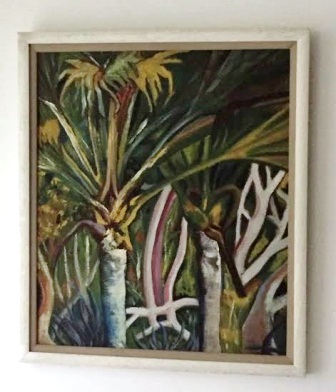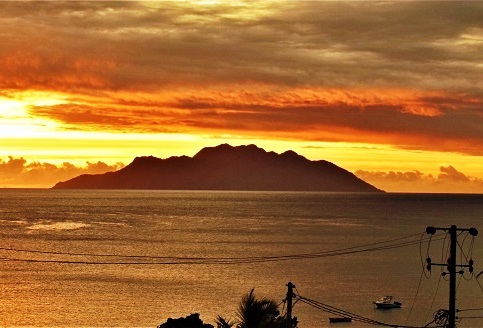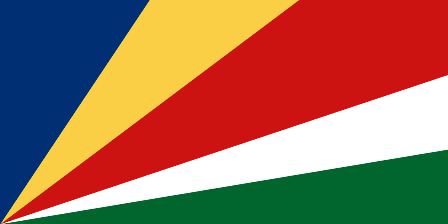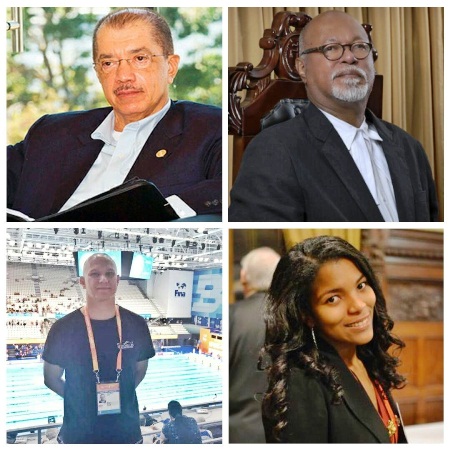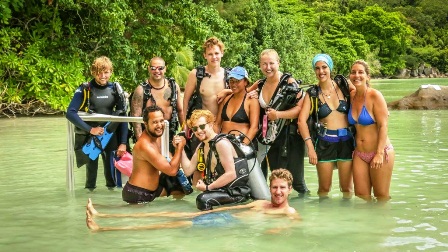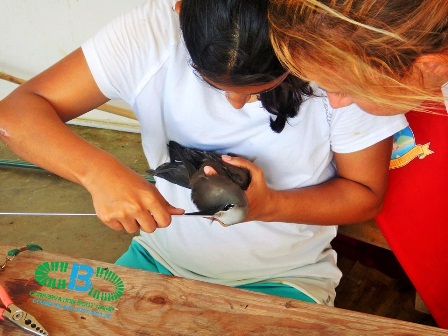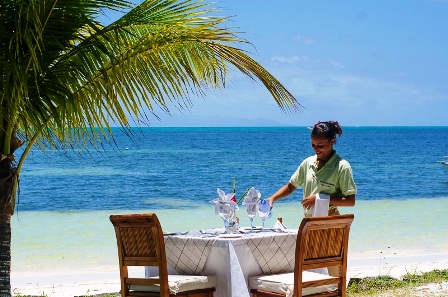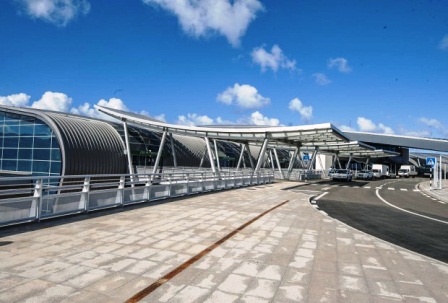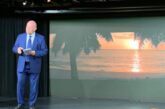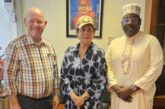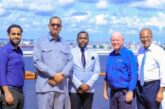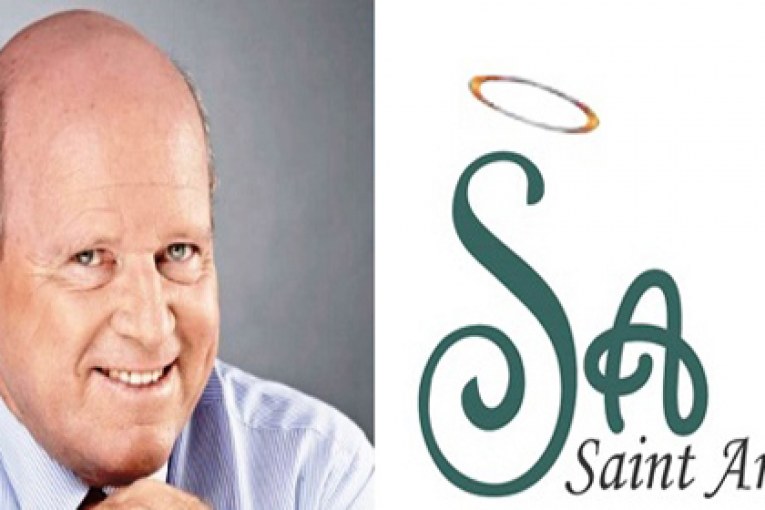
By Alain St.Ange of SAINT ANGE CONSULTANCY
Welcome to Edition #11 of 2017.
I start today with a great quote from the respected Mahatma Gandhi:-
“Your beliefs become your thoughts, your thoughts become your words, your words become your actions, your actions become your habits, your habits become your values, your values become your destiny.”
The world has experienced so much of the opposite of what Mahatma Gandhi speaks about. Bitterness, anger, hate and vindictiveness cannot, and should not, be the habit and values of any leader today, tomorrow or at any time in the future. We need more unity and respect and this includes us here in Seychelles. Many are blaming others only to avoid some truth about themselves. As the country suffers from the deep division, we are embracing the culture of hate and vengeance. It is little wonder Seychelles is facing unprecedented uncertainty where the people are first in line to feel the hardship of the economic challenges.
Last week we proposed a re-look at our VAT system for the benefit of the tourism industry at a time when a boost for this industry is indeed a necessity. Recently, Dr. Sanjay Modak from the Daily Kashmir Images made a detailed analysis of the Tourism Multiplier effect and what cities can learn from Dubai’s model.
An extract from Dr. Sanjay Modak analysis reads:-
“If we consider Dubai, its leaders and Government clearly understood the far-reaching effects of organised tourism.When John Maynard Keynes turned conventional economic thinking on its head in 1936, he not only laid the foundation for present day macroeconomic theory and policy, but he also introduced the concept of the multiplier. Any spending injection into the economy, such as the Quantitative Easing (QE) policy undertaken in recent years by the US and the Eurozone to revive their recession-hit economies, results in an increase in effective demand or GDP via a repeated sequence of consumer spending. While this is not an instantaneous process, GDP in an economy rises by a multiple of the original injection over a period of time.
Little did Keynes imagine then, in an era when the jet age and mass tourism did not exist, that one of the most powerful (and rarely mentioned) of all multipliers would be the tourism multiplier. One reason for this is that unlike sporadic government injections into distressed economies, the tourism multiplier works 24/7 and all year round. And Keynes, writing during the Great Depression, when millions were out of work, would not have known that 80 years later tourism would become the largest employer on earth. Today, one in 11 people in the world work in tourism or travel related industry. The industry generated some $8 trillion in turnover in 2016, according to the UN World Tourism Organisation (UNWTO).
The tourism multiplier is centred on infrastructure and works something like this. Once the essentials are in place – roads, transportation, communications and so on – an entire ecosystem of hotels, restaurants, and entertainment and leisure hubs quickly develops. This investment, on the part of both the government and the private sector, gives rise to a rippling effect via consumption spending trickling down through the economy. With the fundamentals in place, the tourists arrive and spend money and the multiplier kicks into operation once again, affecting yet another large swathe of the local population.
If we consider Dubai, its leaders and government clearly understood the far-reaching effects of organised tourism, perhaps not necessarily as an end in itself but as another, important way of diversifying the economy. Dubai, lacking natural tourist attractions, recognised fairly early on that its geographical juxtaposition – within eight hours flying time of approximately six billion people – was an asset. It succeeded due to a visionary, deliberate and proactive approach, working hard to invest initially in world-class infrastructure such as roads, airports, airlines and communications. This gave rise to ancillary infrastructure centred around hotels, restaurants, entertainment, shopping and leisure.
The infrastructure thus created has benefited residents and visitors alike, and allowed Dubai to attract not just leisure tourists but business visitors as well. Dubai is now the premier trade show hub for a vast panoply of products and services in a region covering not only the greater Middle East, but Africa and other areas as well. One does not need to understand the mathematics of the multiplier to realise the add-on effects that this investment in infrastructure created. The results are palpable.
The UNWTO figures shows, 15 million visitors to the UAE pumped in some $16 billion directly into the economy in 2016. The vision for 2020, with the Expo expected to draw around five million visitors on its own, is to attract 20 million tourists – not an unreasonable scenario given the remarkable growth in tourism that has been witnessed so far.” Dr. Sanjay Modak went on to explain that the multiplier cannot work without investment in infrastructure.
Wonderful advertising slogans and e-visas without investments on the ground do not do the trick. Word of mouth does, and we take it for granted that people will continue to recommend a destination even though the service left much to be desired, the value for money is lacking, and the population made the tourists feel unwelcome. More importantly, Dr. Modak explained that tourism is a highly labour intensive industry.
IT and other ‘glamour’ sectors do not have the capacity to absorb even a fraction of the fast-growing workforce.
Tourism and its ancillaries, on the other hand, do. This is exactly why we started this week’s editorial with a discussion on the need for everyone to really appreciate tourism. This is not an option but a necessity today for the Government and for the people of the country. It is time for everyone to be part of the solution.
Hotel Staff must work in unity together with the management for saving their employment and Government must continue to work with the private sector trade to consolidate the island’s tourism industry.
Today I can proudly confirm that I have recently been appointed as Deputy Secretary-General of ‘Forum of Small Medium Economic AFRICA ASEAN’ (FORSEAA). FORSEAA is an intergovernmental forum founded by Seychelles and Indonesia with members from Africa and ASEAN countries, with its permanent secretariat in Jakarta, Indonesia.
One of the FORSEAA programs is to achieve small medium enterprises (SME) in Culture & Tourism by playing an active role in encouraging the host community to develop a compassionate destination based on the diversity of cultures within Indonesia.
Specifically for small islands’ eco-tourism, FORSEAA will accelerate the cooperation between Africa and ASEAN countries, especially Seychelles and Indonesia, by pairing the brand image of Seychelles in the eco-marine tourism.
I am working to see how we can assist the many small pristine islands in Indonesia to contribute economically to Seychelles.
Finally, it is important to again acknowledge all who are diligently re-posting the Saint Ange Tourism Report weekly. Our Report ranges far and wide, from Australia to the Americas, Africa to Asian and Greater Europe, with your continued support, which is greatly appreciated.
You are helping us to go from strength to strength with each new Edition.
Enjoy the read, Alain St.Ange Saint Ange Consultancy
Constance Ephelia, Seychelles – A Leader in Sustainability
Set within 120 hectares of land, surrounded by lush tropical vegetation, Constance Ephelia, located in the West of Mahé, opened its doors in February 2010. All suites have been specifically built giving guests the choice of either a beautiful garden view or a splendid outlook of the Port Launay Marine Park. The resort boasts 42 Tropical Garden View Rooms, 184 Junior Suites, 40 Senior Suites, 17 Family Villas, 16 Beach Villas, 8 Hillside Villas, 5 Spa Villas and a unique Presidential Villa.
Not only does Constance Ephelia present visitors from across the globe with the natural beauty of the island destination, it is one of the leading establishments actively promoting sustainable tourism in Seychelles. In a previous issue of the Saint Ange Tourism report, I had written about how Sustainable Touristic establishments are becoming the most sought after enterprises by visitors; and during a recent tour of the resort with a group of school children I learnt why Constance Ephelia is a clear leader in this respect. The resort does not use plastic bottles. Drinking water found in the villas and restaurants are in glass bottles that have been specifically designed for Constance Ephelia. The water in the bottles is treated from a desalination plant found on site which is fully powered by photoelectric cells. The hotel also engages in water recycling whereby grey water is treated and used to irrigate the beautifully kept gardens. Located next to the water recycling plant is an area used to produce compost from plant remains such as leaves and branches that are collected during landscaping of the gardens. It was learnt that the kitchens waste no food. Vegetable waste is used to feed the giant tortoises found on site and other waste from the kitchens is sent to pig farmers for feed.
Constance Ephelia is fortunate to be surrounded by one of the largest mangrove forests on Mahe. The wetland is one of the only places in Seychelles that have all seven species of mangroves present. The mangrove forest acts as a natural filter system of the fresh water coming from the surrounding mountains before entering into the Port Launay Marine Park. The Resort has a nursery program in place where fallen mangrove seeds are gathered from the area surrounding the wetland and grown to a certain height before being transplanted to the existing forest. Each month the Resort hosts a ‘Green day’, whereby hotel guests, members of the public, including wildlife clubs from schools are involved in transplanting mangrove shoots, and cleaning up the wetland. This is a great initiative which engages locals and guests to learn more about the importance of wetlands and mangroves. Furthermore, guests are able to kayak leisurely through the mangrove forests, encouraging them to stay in touch with nature.
After winning the Green Globe certification, an award which assesses the sustainability performance of travel and tourism businesses, Constance Ephelia was voted the Indian Ocean’s Leading Green Resort by the World Travel Awards 2017 in July for the third consecutive year. With 2017 marking the International Year of Sustainable Tourism for Development, and being bestowed with such recognition surely boasted the Resort at the United Nations Conference held in June in New York. Speaking at a ceremony honoring Seychelles, the General Manager of Constance Ephelia resort, Mr. Kai Hoffmeister said, “Contributing towards a cleaner and greener environment is at the heart of the resort’s priorities. The environment and surroundings where we find ourselves in are unique and we need to do all we can to protect it.” Having nature as their greatest inspiration, the team at Constance Ephelia said they intend to continue working to keep the original beauty of the place intact.
Constance Ephelia is one of seven establishments of the Constance Hotels and Resorts Group in the Indian Ocean. Aside of Constance Ephelia, the group also runs Constance Lemuria, located on Praslin, the second largest island of the Seychelles. This resort is equally involved in green initiatives, and has a successful turtle monitoring program in place.
Article by Ameer Ebrahim, Environmental Consultant
A Vallee de Mai painting from the 1950s may soon return to Seychelles
Arthur Savy (Jr) was an elected Member of the Seychelles Legislative Assembly for the Praslin District in 1951. Mr Savy had also been a candidate in 1948, the important first ever elections in Seychelles where Members of the Legislative Council were elected. He lost this 1948 election but was elected in the following 1951 elections. Arthur Savy (Jr) was a close friend and political sympathiser of Charles Collet, the then Attorney-General of Seychelles, who through political pressure was forced unceremoniously out of Office.

He was the son of the very well known Arthur Savy (Sr) and Berthe Nageon de Lestang. Arthur Savy (Jr) was a keen tennis player and a great artist who lived on Praslin with his wife Paulette and their three children Francoise, Caroline and Yvon.
Arthur Savy and his family left Seychelles in 1953 / 54 for Paris and then moved on to Kent in the UK before migrating to Venezuela where he became the country’s famous tennis coach. He was so recognised in the world of tennis that Philippe Chartier, the French tennis player who has a court at Roland Garros named after him, sent a moving letter at the passing of Arthur Savy (Jr).
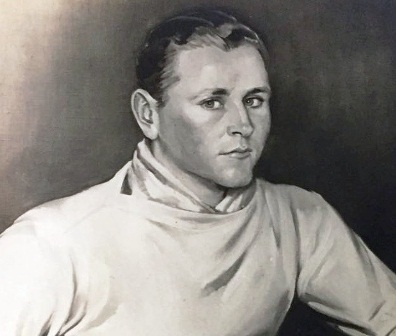

Caroline was in Seychelles recently on her first holiday back after over 60 years since the Savy family left here. She is now planning to return to Seychelles and with her the paintings of Arthur Savy (Jr).
Arthur Savy (Jr) features in the book “Where the Clocks Chime twice” by Alec Waugh. He was 28-years-old when the war broke out and “in June 1940 was herded into a concentration camp”. He spent time sketching with thick pencils “but his sketches prove him to be an accurate, an accomplished draughtsman; he can not only ‘catch the likeness’ but convey a temperament. He has earned the right to paint in the way he does,” Alec Waugh says about the paintings of Arthur Savy (Jr) in his book.
Seychelles – a socio-economic snapshot
The Republic of Seychelles, an archipelago of 115 islands, gained its independence in 1976. Over 4 decades, its per capita income has expanded by roughly seven times. Its estimated GDP (Purchasing Power Parity) for 2016 of around US$2.6 Billion originates from: 83.5% contributed by services (inclusive mainly tourism), 13.9% by industry and 2.6% by agriculture. Estimated GDP (per capita) for 2016 was around US$28,000. The International Monetary Fund (IMF) has predicted GDP annual growth between 3.5% and 3.7 % through 2018.
Today, the pre-independence, subsistence level of existence for a large majority of the population is a distant past for the bulk of the Seychellois. Seychelles has progressed to emerge as the very first high-income economy in Africa, according to World Bank’s classification. This is a positive and well-acclaimed achievement that nevertheless, comes with a price. The status disqualifies the economy from concessional resources for economic, social and environmental development and conservation. Yet the statutory adverse conditions of lack of economies of scale due to size, distance from main markets, paucity of skilled as well as qualified human and natural resources leave the small, face-to-face island economy very vulnerable to external shocks on which it depends for a large majority of its daily consumables. Thus, the focus on judicious management of resources under the present national theme of transparency, accountability and good governance, is timely and appropriate at this juncture.
On the international stage, poverty rates in Seychelles are expected to remain among the lowest in the world outside the ‘Organization for Economic Cooperation and Development’ (OECD). Recent estimates show that extreme poverty, using the international poverty line of US$1.90 per day in 2011 purchasing power parity (PPP), stood at 1.1% of the population in 2013. In the same year, moderate poverty, based on the US$3.1 per day (in 2011 PPP) poverty line was 2.5% of the population. Income inequality is one of the Republic’s main concern as it is considered substantial, with a gross income-based Gini index of 0.46 in 2013, one of the highest in the region.
A recent poverty analysis based on national household expenditure surveys by the National Statistics Bureau (NSB) revealed that 40% of the Seychelles population lives below the established poverty line in the high-cost Paradise. Creating a lot of concern, the Government has reverted to focus attention on policies to try and lower the cost of living by exempting VAT on a longer list of items considered essential and raising remuneration by introducing the 13th month salary across the board. The effectiveness of those policies remains to be felt by consumers in the free market environment of Seychelles. However, it seems more likely that the effects of cost-push inflationary tendencies as well as the reluctance for merchants and traders to pass on the VAT exemptions to customers seem to militate against the intended result of alleviating the exorbitant cost of living plight of the consumers in the absence of any form of price-controls of yester-year. Other innovative medium to long-term solutions must be found and tabled for consideration.
The consumers referred to above are locals as well as the tourists whose industry is the most significant foreign exchange earner ahead of the second pillar of the economy, which is the fisheries industry. The fact remains that with stiffer regional and global competition, Seychelles cannot afford to price itself out of the market to the benefit of its competitors in the region and further afield. Given much more efficient access to information, all potential clients have choices and cost is one of their primary concern in deciding the location of their next holiday destination. Thus reasonable prices, enhanced presence in terms of visibility on various relevant markets and quality service delivery as the perfect hosts, always with the famous Seychellois smiles should remain our consistent KPIs (Key Performance Indicators).
The prevalence of the rule of law, peace, stability, safety and security are elements that are often taken for granted, yet, they are the very platforms for a successful and growing tourism industry. The prevalent challenges such as social-ills, especially with regards to drugs and alcohol abuses leading to petty crimes should also be addressed with greater effectiveness and conviction. Their respective levels could make or break the country’s goose that has been laying golden eggs in a significant way since the opening of the Seychelles International Airport.
This one quintessential infrastructure opened up the tourism industry that has brought much wealth and spin-offs to the island economy. It is clear that in this era of sustainable development and need to mitigate against the adverse effects of Climate Change, Seychelles has the potential to do a lot more than it has been able to register to-date.
What if we could independently produce and store renewable energy starting with solar, that is clean, free, natural from all our roof-tops? What if we could harvest much of the healthy rain-water that falls from the latter? What if from the same roof-tops, we could all enjoy hot water showers and baths? What if we could introduce and operate a smart-grid through Public Private Partnerships that could take on as much renewable energy that can be produced from various existing modes to store and deliver to where its needed? What if in doing so we benefit from a new and more powerful fiber-optic cable that will greatly enhance our connectivity with the world, consolidate our aspirations for the building of a ‘knowledge-based society’ and give a boost to the potentials of our third economic pillar – the Financial and Logistics Services Sector? What if the apparent lack of inclusivity claimed by the World Bank is partially addressed by each roof owner becoming a minor shareholder in the venture responsible to produce, mange and deliver the renewable energy produced? Could such transformational development single out Seychelles as one of the foremost environmentally conscious and forward-looking nations of the region? Would that like the construction of our international airport be the catalyst for the creation of more opportunities, wealth creation and prosperity?
Indeed, what if? You may think I’m a dreamer and I would not be the only one – but in all the above aforementioned scenarios, I am far from dreaming. Those are realizable objectives that are being proposed through a PPP. They are currently at the very early stages of being proposed to Government by investors. Due diligence of the investors and detailed feasibility of the proposals have yet to be finalized pending an indication of interest from the State to partner and realize the “Hexagon Infrastructure Program”.
Government is not being requested to contribute financial capital but rather use its leverages as a facilitator and enabler on the local scene to make it all happen. It is realizable as long as leaders from all angles see and believe in the latent potentials of such a comprehensive set of investments in an era where it is being acknowledged that Foreign Direct Investment is abating and needs a boost to sustain economic growth and development.
Standing at a cross-road on the eve that Seychelles is going to launch the processes for developing an inclusive long-term Vision 2032 followed by its 5-year National Development Strategy to articulate in greater detail how the visions of the Seychellois people will be achieved, the time has come to think in effective, transformational terms rather than making cosmetic and paper-plastering propositions in this unique and timely opportunity to lay even more solid foundations for the next generation. We all have our part to play and we should be forward looking, bold and willing to embrace innovations in the era of Sustainable Development.
Article by Peter Sinon, International Development Consultant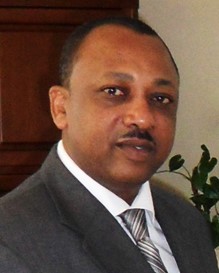
Villa Roscia at Beau Vallon has opened its doors
Villa Roscia officially opened its doors on the 7th of August and has since had several arrivals on their doorstep. The grand family residence is situated at Beau Vallon boasting amazing views of one of the most popular bays on Mahe. The colonial style villa blends tradition and originality with the timeless art of hospitality, an address for those who insist on the finer things in life, but with the free and unshackled comforts that only a private villa can afford.
“Come as guests and leave as friends” is the motto of the owners, Nicole & Paolo Roscia. The Villa is a family-owned and operated establishment. The owners greet guests with a warm welcome each morning and their personalised approach can be appreciated by visitors throughout their stay. Their Italian and Creole cuisine rival that of top restaurants in Seychelles.
The Villa is equipped with 5 bedrooms, each with walk-in wardrobe and en-suite bathroom. Ocean View Rooms have access to a terrace with views over Beau Vallon. A common lounge is available which overlooks the bay. Guests can also enjoy the swimming pool at their leisure. Prices falls in the affordable Seychelles network.
Flying the Seychelles flag proudly
Giving Seychelles positive visibility is the responsibility of every Seychellois who has his or her country at heart. Seeing Seychelles on the news in a positive way is a real plus for the island’s tourism industry and its drive for attracting FDIs. Four islanders in particular are currently making positive noise about our country and must be recognised for their efforts; they are proudly flying the Seychelles Flag.
Former Seychelles President James Michel has been invited to attend the 1st High-Level Pacific Blue Economy Conference (PBEC) under the theme ‘Sustainable Oceans in a Changing Climate’ organised by the Pacific Islands Development Forum to be held in Suva Fiji on 23rd and 24th August 2017. The conference is being held in conjunction with the PIDF Biennial Conference. This is a real honour for Seychelles.
Mr. Michel has been invited as a keynote speaker by the Prime Minister of the Solomon Islands and the Chair of the Pacific Islands Development Forum, Hon. Manasseh D. Sogavare MP, in order to share his understanding of the development of the Blue Economy concept and the Seychelles’ experience for the benefit of Pacific island countries.
In his letter of invitation to President Michel, Prime Minster Manasseh Sagavare said, “We believe that your commitment to the development of the Blue Economy is unparalleled and your participation as a speaker to this conference will be of great benefits to the Pacific Island Countries”.
“I am deeply honoured to share my experience with other Small Island Development States in the Pacific. We have a great sense of solidarity in the face of climate change and in the fight to protect our ocean resources. It will be an opportune moment to reflect on the transformative nature of the Blue Economy as well as the concrete implications of implementing the United Nations’ Sustainable Development Goal 14″, said former President Michel.
Mr. Michel will be accompanied at the Conference by the Chief Executive Officer of the James Michel Foundation, Mr. Jacquelin Dugasse.
Speaker Patrick Pillay on his part led a delegation of Seychellois Parliamentarians to India and he kept Seychelles in the news.
The New Indian Express Newspaper writes:- ‘India’s assistance to Seychelles is absolutely immeasurable.’
India’s assistance is “critical” to the Seychelles in the field of maritime security and in patrolling its large exclusive economic zone notes Patrick Pillay, the Speaker of its National Assembly.
Underlining the importance of defence cooperation between the two countries, Mr. Pillay said India’s assistance to island country is “absolutely immeasurable”. He said Seychelles has exclusive economic zone (EEZ) spread over nearly 1.3 million sq kms and there are reported cases of illegal fishing.
“So, you need surveillance. One of the big areas of cooperation with India is maritime surveillance and training (of the Seychellois armed forces). It is of enormous assistance,” Mr. Pillay said.
Minister Jean Paul Adam, on his part, is participating in the 17th FINA World Masters Championships in Budapest. His results so far are as follows: 50m Butterfly: 27.96, 100m Butterfly: 1.01.43 and 200m Butterfly. Swimming in the Masters Events are reserved for those aged over 25 years of age usually, and swimmers compete according to their age groups. In this event Minister Jean Paul Adam competed in the 40-44 years category. He has in his younger days represented Seychelles in the Olympics as part of the Swimming Team. He made the news and does Seychelles proud.
Angelique Pouponneau, an Attorney-at-law, LLM in Environmental Law and Queen’s Young Leader has on her part announced that she is excited to be joining the Southern and Eastern African youth consultation on ‘Enhancing Young People’s Meaningful participation in Electoral Process in Africa”. The Consultation will take place in Arusha, Tanzania at the East African Community Head Quarters from August 28-30, 2017 with the aim of garnering youth perspectives on overcoming barriers to meaningful engagement and participation in electoral processes. The meeting is also an opportunity to build the capacity of youth-oriented and focused organizations /networks towards enhanced involvement of young people in electoral processes through responsive actions. Angelique is in the news as a young Seychellois graduate who is making a mark in her field.
Four Seychellois from different walks of life are making news on a global platform, and, in so doing, are keeping Seychelles visible and relevant in the world of tourism.
Travel for Science
As the world becomes environmentally conscious, more people are travelling to certain parts of the world specifically to be part of scientific research. This form of tourism involves non-specialized individuals paying a Non-Governmental Organization, research institute, hotel establishment, or nature club to volunteer in scientific research that they are involved in.
Whether you are searching for an alternative career path, looking to gain experience during a gap year to further your professional self, discovering the true culture of a region, meeting like-minded people, or simply wanting to give back, this type of travel can be quite fulfilling. It not only benefits the traveler but also provides an increase in finances that facilitate scientific research. This in turn increases community ownership, support and capacity in management. Furthermore, it broadens exposure of the country in which the research is taking place to a wider range of global communities.
Globally, there are many institutes that offer research tourism activities; Earthwatch Institute, Coral Cay Conservation, Operational Wallacea, Conservation Volunteers Australia, Frontier, Global Vision International, Eye to Eye Marine Encounters, and DIVO just to name a few.
Looking closer to home, GVI, MCSS and Nature Seychelles offer research-based travel expeditions to the Seychelles. Research recruits are given easy access to untouched regions of the Seychelles, such as the Baie Ternay Marine National Park, Curieuse Island, and Cousin Island, allowing them to discover the true rich marine flora and fauna that the small island Nation has to offer. Volunteers are able to partake in ongoing world class research such as whale shark and turtle monitoring, endemic bird conservation, coral reef research and restoration, etc. Some of these institutions offer short term or even long term packages, depending on the preference of the visitor.
Article by Ameer Ebrahim, Environmental Consultant
The Indian Ocean Lodge:Where Service Stands Out
It may not have the bells and whistles of a 5-star hotel, but the Indian Ocean Lodge is proving that service does not have to be compromised in order for guests to enjoy an affordable stay in Seychelles. The 32-room hotel, situated on Grand Anse Beach on the island of Praslin, is making a mark with its humble brand of island hospitality, if its recent reviews are any indication.
The consistent theme throughout the feedback for Indian Ocean Lodge, online and elsewhere, usually revolves around its service and the staff who give it, says Richard Simon, its general manager. “Our hotel has always been at ease with what we are, and what we’re not,” Simon says, “It’s a comfortable place, and our staff do everything they can to make our guests comfortable as well, but in a very easy-going way without a lot of fuss.”
As one Booking.com review puts it, the hotel has a “relaxing ambiance with discreet, polite and efficient service, and an amazing spirit of teamwork. This would be home away from home on the beautiful island of Praslin.”
And it’s not just independent travellers leaving feedback on online travel websites. According to Simon, Indian Ocean Lodge also scores well amongst its clients from major international tour operators such as TUI in Germany.
“Thanks to the feedback from guests, we’ve far exceeded TUI’s quality benchmarks that were set for the past year,” Simon says, “and these reflect our scores for service, food quality and the amenities and cleanliness of the hotel and its rooms.”
The cuisine, in fact, often comes as a pleasant surprise for guests, who praise the meals for being healthy, creative, and with a focus on local produce. Its local culinary team produces intricately presented multi-course meals or lavish buffets for dinner. And for breakfast, juice packets are never poured into big containers – instead, everything is freshly squeezed.
“There are a lot of these little things that we do that are not that difficult, but add value in a way that our guests can appreciate,” Simon says, “we try our best to punch above our weight.”
For travellers seeking a reasonably priced holiday in Seychelles, the Indian Ocean Lodge approach to value may prompt a closer look.
Second Terminal for Mauritius Airport
Prime Minister Pravind Jugnauth of Mauritius has announced the start of the construction of a second passenger terminal in 2019. Prime Minister Pravind Jugnauth said that the new terminal was due to be completed by 2020.
This announcement was made during a ceremony organised on the occasion of the 50th anniversary of Air Mauritius in Ebene on the 11th August. The project that now forms part of the Airport Master Plan, is one of the major infrastructure projects that are in the pipeline to modernise the transport sector.
It was during this same event that the CEO of Air Mauritius Somas Appavou announced the setting up of the Air Mauritius Foundation that aims at promoting arts and culture, conservation of natural heritage and environment, empowering youths by contributing to the development of sports and encouraging excellence in education.
Dr. Taleb Rifai, the Secretary General of the UNWTO was in Mauritius for the 50th anniversary celebrations of Air Mauritius.
Reunion Island records outstanding tourist arrival numbers
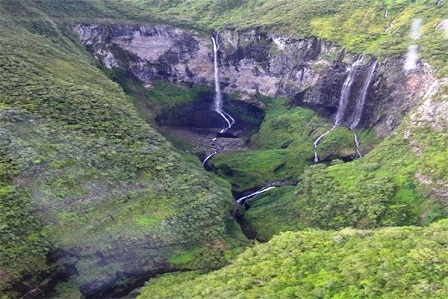
Reunion Island, one of the Vanilla Islands of the Island Ocean alongside Comores, Madagascar, Mauritius, Mayotte and Seychelles, has recorded a historical growth in tourist arrivals for the first semester 2017, with 228 672 visitors representing an increase of 14.9% compared to the same period last year.
Those figures have never been achieved until now. Metropolitan France remains the main market with 166 869 tourists for the period. In the region, there has also been an exceptional increase of 88% in tourist arrivals mainly from Mauritius and Mayotte.
The cruising activities have contributed to these figures too with more than 10 000 passengers and crew members landing on La Reunion between January and April.
Events benefits the local population as it brings visibility to the country
Mauritius to host ISLAND R3HAB #3: 12 HOURS OF NON-STOP MUSIC. Seychelles needs to remain committed to the suite of activities it has on offer. Being part of the World of Events brings quality entertainment for the local population and visitors alike, but above all else it brings visibility to the country fighting to get seen to remain relevant.
Mauritius and Reunion Islands have come out with a list of new cultural based events and this shows their belief in local artists and performers. Seychelles already has a list of events that touches their historical links with Africa, India, China, France and the UK. After years of hosting their annual Festival Kreol is today recognised as the ‘Capital of the Creole World’ and maintaining such events is so important.
Shangri-La’s le Touessrok Resort & Spa will be hosting the much awaited third edition of the musical event ISLAND R3HAB on Ilot Mangénie on the 2nd September. Enjoy 12-hours non-stop music with some of the most popular internationally renowned artists, namely JanuaryOne and Sublime, highly acclaimed on the South-African electro scenes, Arcade 82, from the hottest nightclubs and events in Dubai and performing for the second time at the Island R3hab, as well as the locally renowned Mauritian DJ, David Jay.



